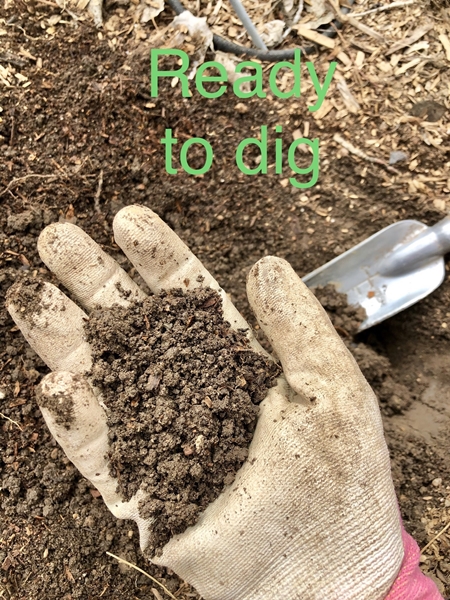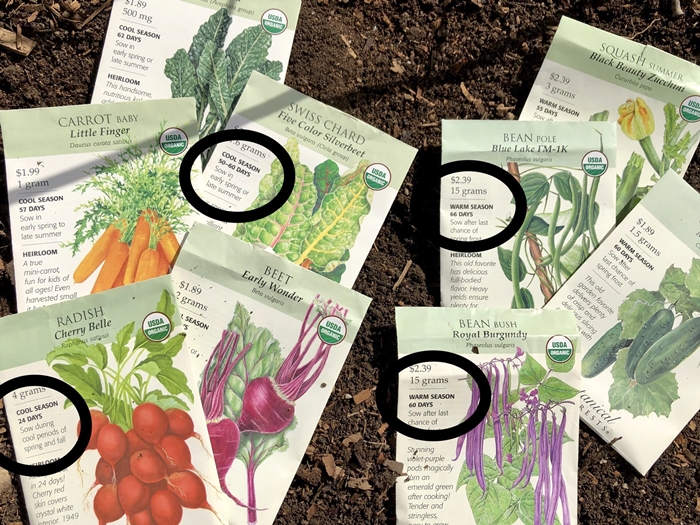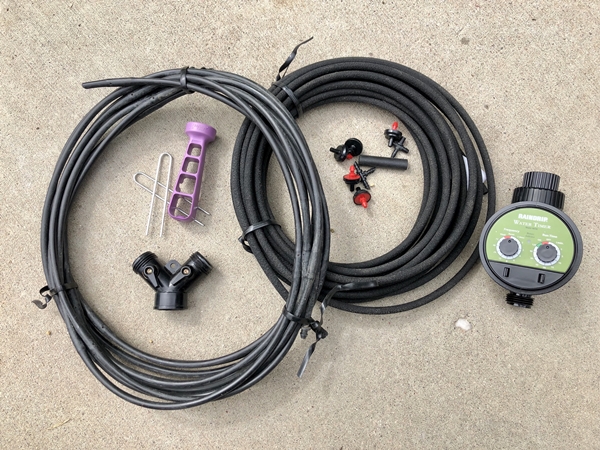Guest post by Erika Strote, Colorado State University Extension Master Gardener in Larimer County
Rising spring temperatures tend to trigger an outbreak of garden fever in those of us who love to get our hands in the dirt. Seed packets and plants find their way into our grocery carts in lieu of actual produce, tempting us with the promise of backyard bounty.
It is easy to imagine the abundance these little seeds will bring…before the reality of scorching heat, insects, weeds, and hailstorms that come later in the summer.
While it is true that gardening in Colorado can test the patience of even the most experienced growers, there is plenty to do at the start of the season to help set your garden up for success.
Prep Your Space
If you are starting a new garden this year, look for a spot in your yard that gets at least 6-8 hours of sunlight. Building raised beds and filling them with high quality garden soil is an efficient and simple way to get a garden going quickly. If you don’t have much space that receives enough sunlight, don’t despair—you can grow a remarkable number of crops in containers placed in sunny spots in your yard.
If you already have a garden, now is the time to make sure you have cleared out any leftover plant debris that did not get removed in the fall. That debris is a favorite place for garden pests to overwinter, so make sure to kick out those unwanted tenants before they can reestablish themselves.
Improve Your Soil
Even though the weather may lure you outside to work in the garden, check to make sure your soil is not too soggy from spring moisture before you get out your shovel. An easy way to check is to scoop up a handful of soil and squeeze it into a ball. If the soil stays balled up, better to wait, so as not to compact the soil into concrete-like clumps that can take seasons to undo.

If the soil crumbles easily when released, it is dry enough to work. Once the soil has dried out enough to work, add organic soil amendments, like compost, mixed to a depth of 4-8”, if desired. Research suggests avoiding unnecessary tilling, as this destroys the beneficial soil structure. So, if you turned your beds in the fall, try skipping it this spring.

If you want to know which amendments will best help your garden, consider having your soil tested to find out soil pH, salts and nutrient levels by the Colorado State University soil testing lab. More information can be found at www.soiltestinglab.colostate.edu
Know When to Plant
Mother’s Day is considered last frost date for Front Range gardeners, but the actual last frost varies widely year to year. This doesn’t mean you have to wait until the middle of May to start your garden, but you should stick to planting cool season crops earlier in the spring, such as greens, snap peas, radishes, beets, and carrots.
Don’t be fooled by the tomato and herb plants at the nurseries or grocery stores. Wait to plant your tender, warm season crops like tomatoes, squash, green beans and basil until all risk of frost has passed and the nighttime temps have consistently warmed up above 65 degrees, which is generally late May or early June. A single hard frost can turn your basil to a blackened, mushy mess and stunt your tomato crop.
Finally, check your seed packets to see the number of days required before you can begin to harvest. Our first hard frost generally falls in early October, so make sure your plants have enough time to mature before this point. There are plenty of varieties from which to choose, so look for those suited to the length of our shorter growing season.

Check your seed packets to see the number of days required before you can begin to harvest
Think about Water
Consider installing drip irrigation in your beds or containers this year. Irrigating this way helps to conserve water, and it also cuts down on diseases that can stem from overhead watering.
Drip irrigation parts are available at hardware stores and nurseries, and are simple and inexpensive to install. Add a timer at your hose bib to remove some of the operator error in watering (like forgetting to turn the water on…or off).

Consider installing drip irrigation in your beds or containers to conserve water and cut down on diseases that can stem from overhead watering.
Water in the early morning rather than in the evenings, so moisture on the leaves dries quickly which can help prevent diseases. Run your irrigation long enough to soak the soil down to plant roots. Watering needs will be less frequent when the outside temps are cooler in the spring and fall. Take the time to check periodically to make sure plants are getting the right amount of moisture by digging down a few inches to make sure the soil is moist but not soggy.
Don’t Forget the Mulch
Once the plants are in the ground, don’t forget the final step to garden success—spreading a layer of mulch over the top of the garden. Although easy to overlook, this step helps to conserve water and suppress weeds. You can use grass clippings, finely shredded leaves, or compost laid directly over the drip irrigation lines to mulch your garden. Make sure to give your plants a little breathing room by not placing the mulch too close to the base of the plants.
These five simple steps can help to make your spring garden dreams a summer garden reality. So, by all means, grab those seed packets and get growing!
More questions about getting ready to plant your garden? Your local Larimer County Master Gardeners are ready to answer your gardening questions! You can email them anytime at larimermg@gmail.com or call 970-498-6000 on Mondays, Wednesdays, and Fridays from 10am-1pm, mid-April through mid-October.
Visit the CSU Extension website for more gardening information: extension.colostate.edu.

